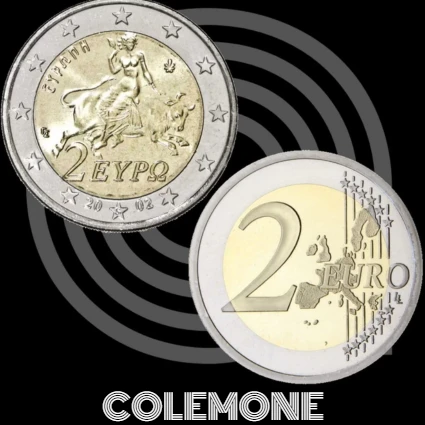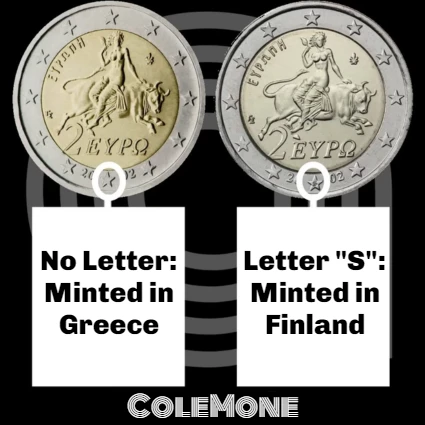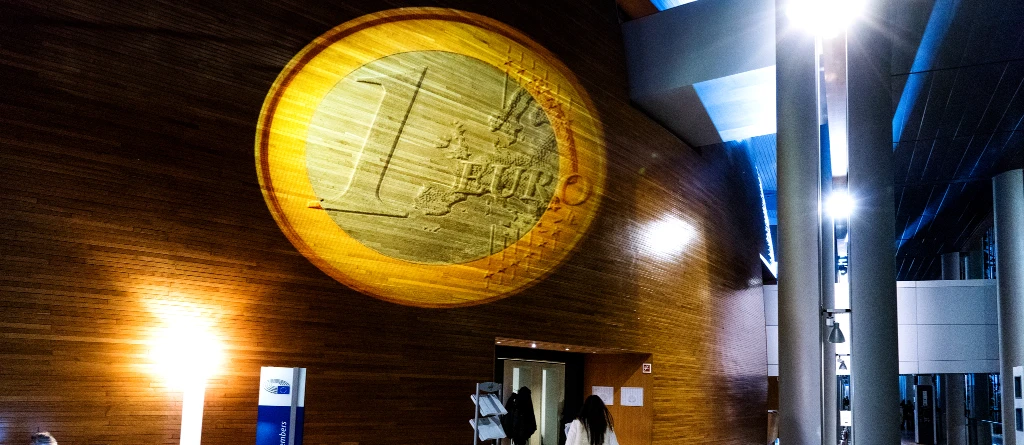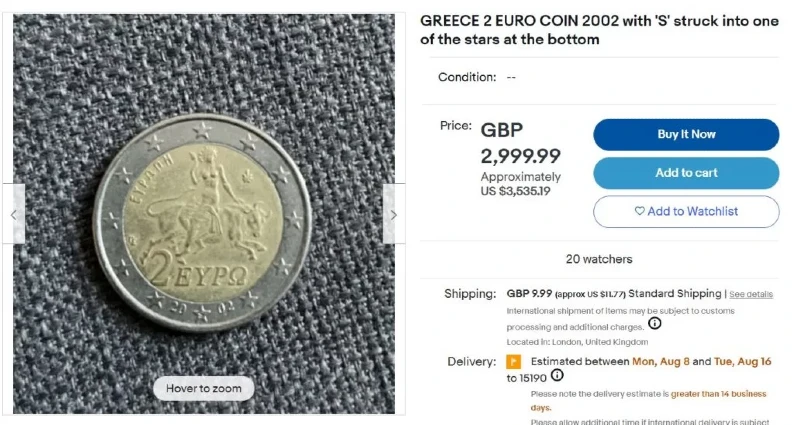Lately, I have gotten several messages asking about the value of the 2002 Greece 2 euro coin with the “S” mintmark through Numisteacher’s Facebook page. You know it: the one that seems to say “EYPO”, although it really says “ΕΥΡΩ”, which is Greek for “Euro”. The one that shows a woman riding a bull? Yeah, that one.

There is quite a lot of confusing information out there as regards this coin, mostly due to some dishonest or misinformed sellers placing ads with exorbitant prices in platforms such as eBay. And we’re talking about drivel in the thousands of dollars here.
But reality is much more logical than that. Let’s see how much the Greece 2 Euro “S” coin from 2002 is really worth, why it has that “S”, and why some people think it is pricier than it really is.
What is the value of a Greece 2 Euro “S” coin from 2002?
Short answer: 2 euros, or around 2 dollars.
But I have a long answer for you too:
There are 70 million Greece 2 Euro coins from 2002 with the infamous “S”. And almost all of them are in circulation, so getting one of these in your change, or somewhere else, is nothing very difficult or special.

If you are reading this, you have probably arrived here through Google, because you have randomly gotten one and have searched how much it was worth. If this coin has circulated, as a rule of thumb, a collector will not want to buy it. Generally, collectors only want shiny, new euro coins.
If it looks shiny and new, we say that it is in “mint state”. If that is the case of your Greece 2002 “S” 2 Euro coin, then its value is 7.50 euros, or around 7.50 dollars, according to the latest Leuchtturm euro catalogue. But it can’t have any use marks or scratches. And it can’t have been cleaned either: the average coin collector is able to notice whether a coin has been cleaned, as a cleaned coin’s shine is different from an uncleaned one’s.
What does the “S” in the 2002 2 Euro coin from Greece mean?
The “S” in the 2002 Greece 2 Euro coin does not mean “special”, as I have seen in some ads. In fact, the “S” is the first letter in “Suomi”, or the name of Finland in Finnish language.

And why does Finland appear on a Greek coin?
Well, it does have a logical explanation.
Even though the Euro as a proper, physical coin wasn’t launched to circulation until 2002, the Economic and Monetary Union, what we today call the “Eurozone”, was created in 1999, and included 11 countries that, from then on, would adopt the common currency for bank transactions and other types of monetary operations that did not require a physical currency to be carried out.
Greece was not among those 11 countries. The Greek economy didn’t comply with the requirements imposed by the European Union, known as the convergence criteria, so it was left out of the list of the founding countries that would adopt the Euro in 1999.
But, in the year 2000, the Hellenic Republic announced that it had finally achieved those criteria, and, shortly after, the European Union certified that Greece would indeed be able to join the Eurozone, which they did on January 1st, 2001. Later on, it was known that those criteria were satisfied in a bit of a shady way, but that’s a story for another day.

The thing is that, while the rest of the countries had three years to mint all the coins required for the changeover to the Euro on January 1st, 2002, Greece only had 365 days. But the Nomismatokopeio-IETA, the Greek equivalent to the US Mint or the Royal Mint, did not have the necessary facilities to manufacture such a huge amount of coins in so short of a time.
So Greece had to ask other countries’ mints for help. And three mints lent a hand: the FNMT from Spain, which marked its coins with an “E”, the Monnaie de Paris from France, which marked their coins with an “F”, and the Suomen Rahapaja from Finland, which marked their coins with the infamous “S”.
In this table, you can see who minted what:
| Coin | Greece (No letter) | France (letter “F”) | Spain (letter “E”) | Finland (letter “S”) |
|---|---|---|---|---|
| 1 cent | 100,940,000 | 15,000,000 | – | – |
| 2 cents | 175,940,000 | 18,000,000 | – | – |
| 5 cents | 210,940,000 | 90,000,000 | – | – |
| 10 cents | 138,940,000 | 100,000,000 | – | – |
| 20 cents | 208,940,000 | – | 120,000,000 | – |
| 50 cents | 92,940,000 | 70,000,000 | – | – |
| 1 euro | 61,440,000 | – | – | 50,000,000 |
| 2 euro | 75,340,000 | – | – | 70,000,000 |
As I’m sure you can notice, there are 70 million 2 Euro Greece 2002 “S” coins, which is almost half of all the Greek 2 euro coins minted in 2002. That’s why if they’re not shiny and new, they are not worth more than the 2 euros that the coin itself says they are worth.
So why do people ask so much for it in eBay?
Because people can ask for their belongings as much as they want to, but that doesn’t mean that someone is going to pay their asking price.
Imagine that I own a run-of-the-mill, 7 year-old Toyota Camry. And I want to sell it. So I head to eBay, place an ad, and ask for it 17 million dollars. Can I do it? Sure. Is somebody going to buy it? I really doubt it.

And that is what is going on with the 2002 Greece 2 Euro “S” coin, and, to a lesser extent, with the value of Cyprus 2008 2 Euro coin. The difference here is that, more or less, everybody has an approximate idea of how much a car is worth, and if we see an ad for a Toyota Camry with a 17 million dollar asking price, we laugh, and move on with our lives. But, except for those who know a bit about numismatics and coin collecting, not many people have a clue about how much a coin is approximately worth.
And sometimes because a seller is dishonest, sometimes because they don’t have a clue either, or, simply, because they saw another far-fetched ad from someone else, they decided that an exorbitant price was the way to go.